The orchid is a beautiful and amazing flower that appeared 120 million years ago, while it reached its peak of popularity only 3 thousand years ago. The homeland of this flower is China and Japan. This plant was brought to Europe for the first time about 2 centuries ago, and today there are over 40 thousand varieties of orchids. With the help of scientists and breeders, today it is possible to grow an orchid at home.
Phalaenopsis, the most popular orchid hybrid, is a rather susceptible and capricious flower to various diseases. Therefore, in addition to proper care and cultivation experience, it is necessary to consider all orchid diseases and how to treat them.
It often happens that phalaenopsis starts to hurt due to excessive care... Therefore, the most popular diseases are non-communicable diseases that are associated with illiterate care. Very often, these diseases lead to weakness of the bush, its death, or the formation of pathogenic organisms and pests.
Content
Phalaenopsis hybrid description
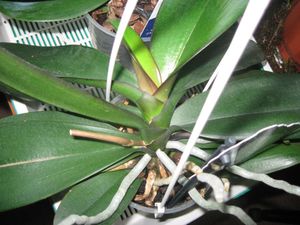 Phalaenopsis is considered one of the most common varieties of orchids - the most popular hybrid in our country. This plant can have a wide variety of flower buds (from pure white to dark blue with various spots and blotches on the leaves). Orchids can be of different sizes, the number of leaves, and also have no scent.
Phalaenopsis is considered one of the most common varieties of orchids - the most popular hybrid in our country. This plant can have a wide variety of flower buds (from pure white to dark blue with various spots and blotches on the leaves). Orchids can be of different sizes, the number of leaves, and also have no scent.
The number of flowers per plant significantly depends on the state of the orchid itself, as well as the number of branches and can be in the range of 6-35 pieces on one branch. This plant can be grown quite successfully at home. Phalaenopsis has the shape of one stem with compacted leaves of different shapes and types, and there is also only one growth point.
This hybrid requires the same careful care as their other representatives. Since these species are the most common in cultivation, you need to tell in more detail about their various phalaenopsis diseases with a description and photo.
Probable orchid diseases
Phalaenopsis is the most common orchid variety infected with noncommunicable leaf diseases. The appearance of the phalaenopsis orchid disease is explained by illiterate care. However, there are other pests of the bush: bacterial spots, rot, various viruses, anthracnose, fusarium.
Let's consider in more detail orchid diseases and their treatment, as well as photos of various diseases.
Non-communicable diseases of this plant are considered the most common. Often, gardeners complain that the leaves of orchids begin to turn yellow, and soon their bush completely gets a yellow tint. The reason for this may be illiterate care... This happens for the following reasons:
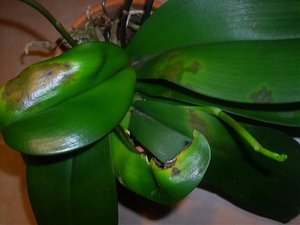 Direct exposure to the rays of the sun, they burn the foliage of delicate orchids.
Direct exposure to the rays of the sun, they burn the foliage of delicate orchids.- Excessive moisture as a result of frequent watering.
- Finding a flower in the cold often leads to freezing or hypothermia and, as a result, to the yellowness of the leaves of the plant.
- Poor lighting can also be the cause.
- The plant is quite susceptible to a drop in temperature.A short freezing still has some chance of their survival, but when the bush has spent more than 11 hours in the frost, then, most likely, it will die.
- Steaming can also negatively affect the overall well-being of the plant. This can be worse than direct exposure to the sun's rays, as the process of wilting of their inflorescences and leaves takes place.
Phalaenopsis, like any type of orchid, needs good and high-quality lighting. Lack of lighting can lead to a significant deterioration in the condition of orchids: the stems of the flowers are rapidly stretching upward, the leaves get a pale green tint.
These plants are most susceptible to any disease. And the direct hit of the sun's rays contributes the formation of yellowing of their leaves.
Phalaenopsis orchid is much less likely to become infected with viral diseases. These diseases are distinguished by the manifestation of spotting in the form of a mosaic on the petals of the buds and the leaves of the flower. This spotting can resemble the shape of lines, circles, arrows. When you see signs of a viral disease in an orchid, then first of all it must be isolated from healthy plants. Be sure to show the infected phalaenopsis to a specialist, if this is not possible, then take at least a photo. In the event that your guesses are confirmed, then this flower is best burned to prevent damage to healthy bushes.
Spotting on the leaves of the bud is considered the first signal that the orchid has begun to suffer from a fungal or bacterial infection. As a rule, it is the Phalaenopsis variety that is affected by a bacterial infection. Everything happens with the yellowing of the foliage, which after a certain time gets a dark color and becomes very elastic. After the leaves are covered with moist ulcers, of which liquid substance flows out... Salvation from this infection can only be the cutting of infected leaves, and you also need to cauterize the cut with iodine.
There are also more potent drugs, their use occurs at a very advanced stage. If, two weeks after cutting, new spots have not formed on the orchids, then the plant is no longer infectious, and you can safely install it on a window with others.
Anthracnose
It is also a fairly common disease that appears on phalaenopsis leaves. First appear small rounded spots, which over time begin to turn black and are distinguished by a concave surface. After a certain time, a bloom of pink or yellow appears on these spots. The reason for the formation of anthracnose is considered to be high air humidity, as well as the prolonged presence of water in the axils of the foliage.
In order to prevent the formation of this disease, you need to periodically air the room. Air humidity in the room should be no more than 65%, but not less than 45%. It is also advisable to blot accumulated water in the axils of the foliage. When infected with anthracnose, the infected leaves are removed, and the cut sites are cauterized with iodine. Treatment with such means as Skor, Ritomil, Mikasan is carried out already at an advanced stage of the disease.
Powdery mildew
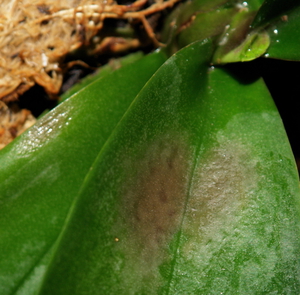 This is very common fungal infection... The disease appears in the form of a purple-white bloom on foliage. Outwardly, the flower looks as if the plant is sprinkled with flour... This is a rather dangerous disease that can lead to the death of the bush. The reason for the formation is considered to be high air humidity and high temperature, and this leads to steaming of the plant. For prophylactic purposes, sprinkle with Fitosporin is performed.
This is very common fungal infection... The disease appears in the form of a purple-white bloom on foliage. Outwardly, the flower looks as if the plant is sprinkled with flour... This is a rather dangerous disease that can lead to the death of the bush. The reason for the formation is considered to be high air humidity and high temperature, and this leads to steaming of the plant. For prophylactic purposes, sprinkle with Fitosporin is performed.
The treatment of this disease of the phalaenopsis orchid is carried out by spraying with Skor or a mixture of colloidal sulfur. But first, the plant needs to be thoroughly watered, and after a few hours the treatment process can begin.
Rust
Quite a rare disease of rust too is a fungal infection for orchids.This disease, like the ones described above, infects the leaves of the phalaenopsis. As a rule, weak bushes are exposed to this disease. Rust appears in the form of spots on the inside of the leaves, which very soon take on a reddish tint. This is the sporulation of fungi, which have a reddish tint, from this and the name of the disease - rust.
The treatments are quite similar to those used for the diseases described above. The infected areas must be removed without fail, and the sections must be treated with 25% alcohol solution. Orchid treatment is carried out by spraying with Mikasan, Skor and Ritomil products.
Black fungi or sooty
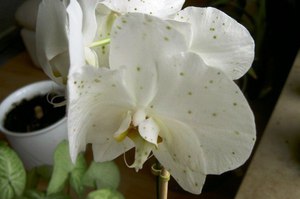 Pests that infect orchids are also common. They are: scale insects, scale insects, and also aphids. This fungus manifests itself in the form of a black bloom on sweet flower formations. These pests prevent the passage of light to the flower by clogging the stomata of the foliage.
Pests that infect orchids are also common. They are: scale insects, scale insects, and also aphids. This fungus manifests itself in the form of a black bloom on sweet flower formations. These pests prevent the passage of light to the flower by clogging the stomata of the foliage.
Among other representatives of this type of pest, the worm is the most dangerous. This insect has an oval appearance, and its size can be about 4 mm.
There are two varieties that the worm has that can infect phalaenopsis:
- Bristleworm is a pest that has a strongly pronounced reddish body color and an oval shape with a snow-white bloom.
- Citrus bug. It is a pest that ranges in color from orange to black, but is usually pink with a distinctive snow-white bloom. The largest body size can be up to 6 mm.
The scale is very similar to the scale insect, but it lacks a shield. Both varieties secrete pad, a sweetish liquid that protects them from various external factors. The worm is a rather malicious pest, and if measures are not taken in time to remove it, the orchid can die.
The worm is so harmful to the plant that it manages to suck out all the juice from it, and at the same time adds its poison to the flower... These substances weaken the bush, which leads to foliage falling off or yellowing.
The formation of sticky drops and snow-white bloom on the foliage is the first sign that a worm has started up on orchids.
 It infects only weak orchids that are not sufficiently grown for this plant. Often, these pests are formed on bushes overfed with nitrogen. As a rule, the worm infects flowers in winter, at which time the daylight hours are significantly shortened, and the flowers do not have enough light. Also, this pest can appear with you with the acquisition of a new flower. Therefore, when buying an orchid, you must be especially careful and attentive.
It infects only weak orchids that are not sufficiently grown for this plant. Often, these pests are formed on bushes overfed with nitrogen. As a rule, the worm infects flowers in winter, at which time the daylight hours are significantly shortened, and the flowers do not have enough light. Also, this pest can appear with you with the acquisition of a new flower. Therefore, when buying an orchid, you must be especially careful and attentive.
For prevention, a tool is quite popular where it is based on neem tree oil... It is used only for prophylaxis, since treatment with this drug will not show a positive effect.
You can also use the hot shower method. The meaning of this method is to water the orchid with warm water 45-55 gr. Since these pests die at a temperature of more than 40 degrees, this option is very effective in treating the plant. Scabbards also often infect orchids.
Phalaenopsis viral and fungal infections can lead to the formation of rot. The process of decay of the roots, as well as the foliage of the plant, takes place. The cause of decay can be increased high humidity and temperature.
Treatment consists of repeated processing of roots and soil 0.3% composition of the foundation or 0.2% benlate mixture. It is necessary to completely immerse the orchid in this substance. The interval between sessions must be at least 2 weeks.
Rot
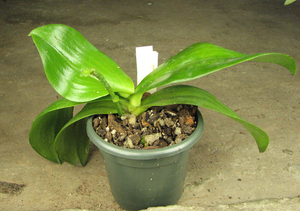 Gray rot is considered a common phalaenopsis disease. This rot appears on foliage in the form of brown and black specks with a fluffy formation. The cause of the formation of rot is considered to be high air humidity, and for prevention it is advised to use Kendal when watering. It increases the plant's resistance to various diseases. In case of infection of the orchid with rot, it is necessary to carry out spraying with fungicide... And with a secondary lesion, it is advised to use a different fungicide, since rot spores adapt to the means used.
Gray rot is considered a common phalaenopsis disease. This rot appears on foliage in the form of brown and black specks with a fluffy formation. The cause of the formation of rot is considered to be high air humidity, and for prevention it is advised to use Kendal when watering. It increases the plant's resistance to various diseases. In case of infection of the orchid with rot, it is necessary to carry out spraying with fungicide... And with a secondary lesion, it is advised to use a different fungicide, since rot spores adapt to the means used.
- The formation of black rot takes place on plants that are already infected with pests and diseases. In order not to completely destroy the plant, you need to remove the affected areas and foliage, and soak the cut areas with colloidal sulfur.
- Fusarion rot infects the leaves of the plant, after a while they begin to turn yellow and fold. The leaves become grayish in color. The treatment is carried out by completely immersing the orchid in a 0.3% mixture of foundation. This procedure is required to be carried out within 2 weeks.
- A characteristic feature of brown rot is infection of young orchid leaves. The rot appears in the form of bright brown formations that grow very quickly and take on a deep brown hue. The methods of struggle are exactly the same as with other types of rot. And for prevention, you can spray with a light solution of vitriol no more than once every 30 days.
Summing up, we can say that at elevated temperatures and excessive humidity it is necessary to ventilate the room more often, do not place the orchids very tightly together, make sure that the water is not on the foliage for a long time. Watering and spraying orchids is necessary only at the beginning of the day. It is advisable to put a fan in a room with a large number and overcrowding of plants and let it run at least during the hottest time. This can help prevent many problems and all sorts of diseases.
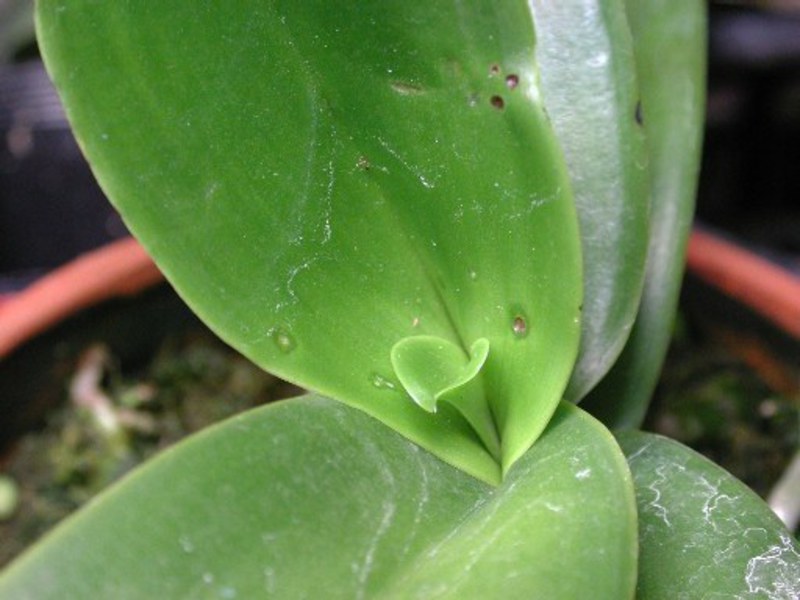
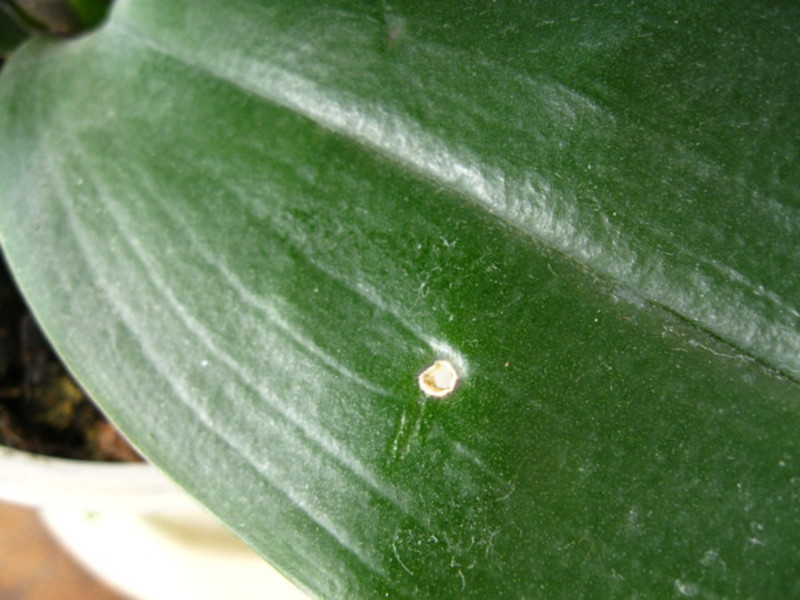
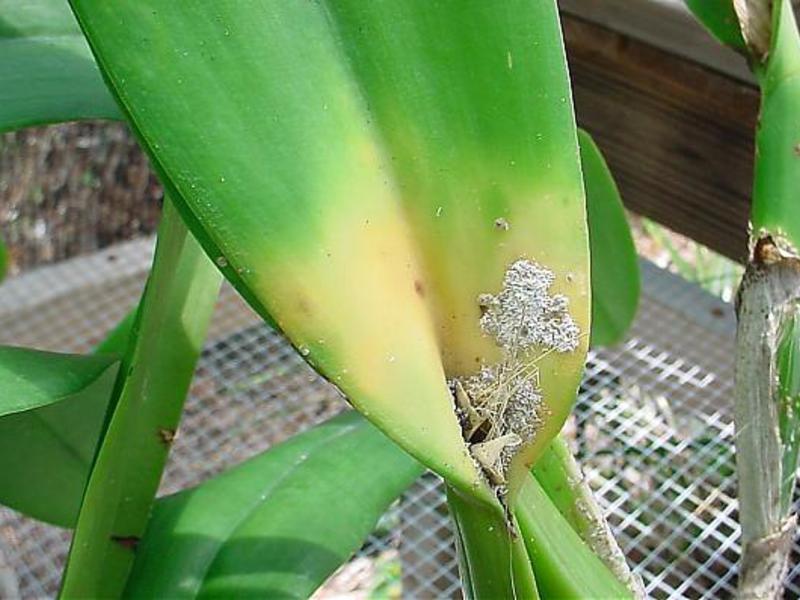
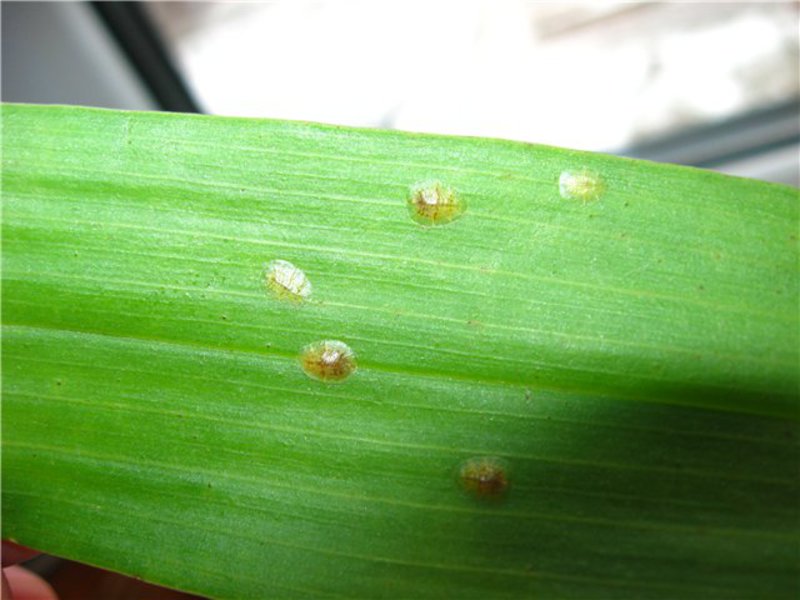

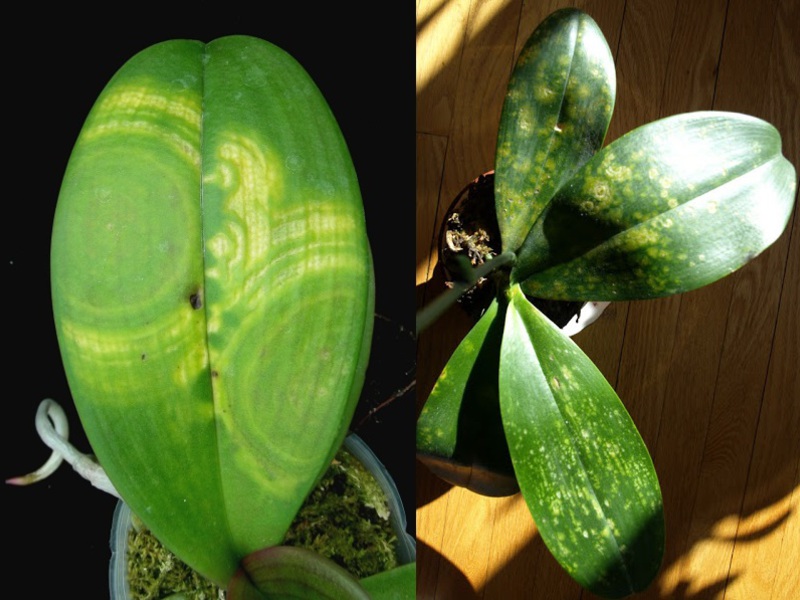
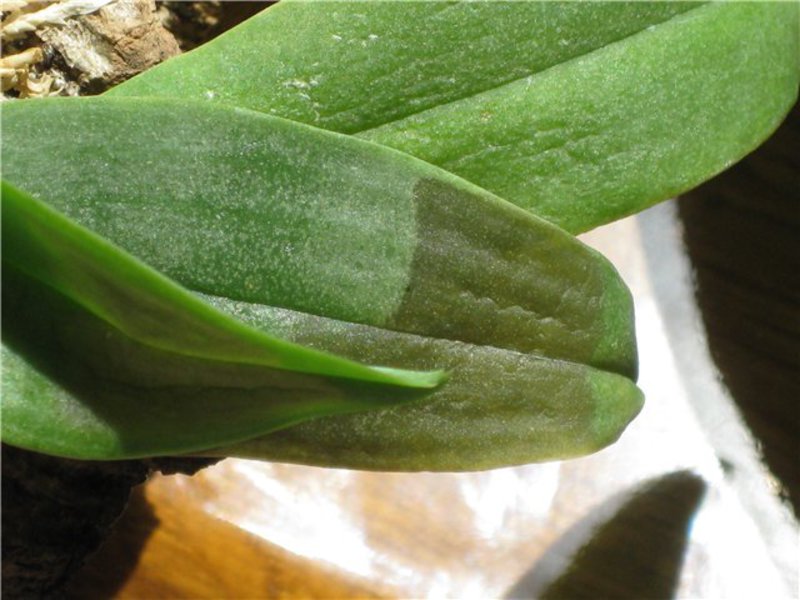

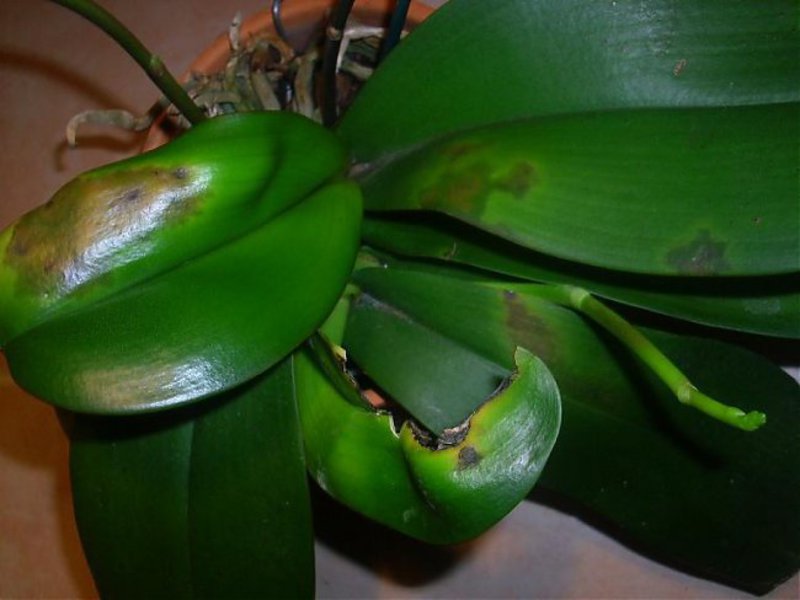


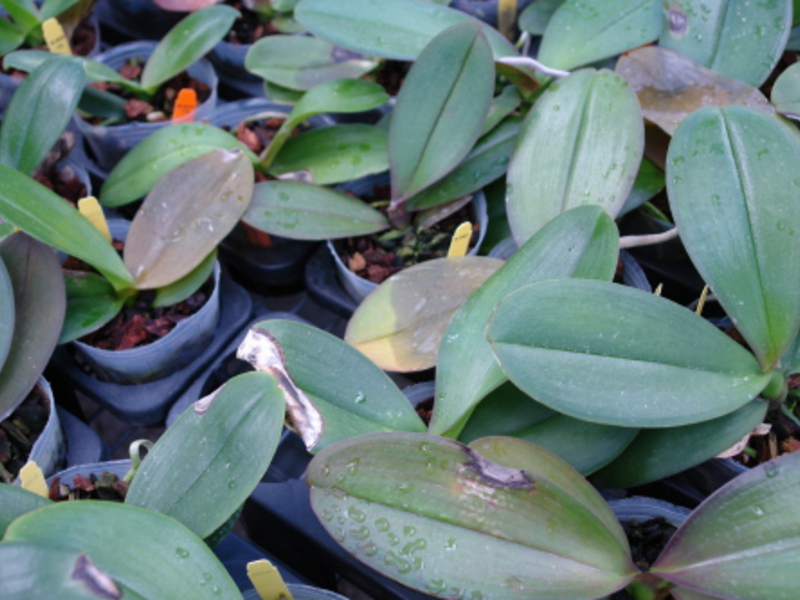
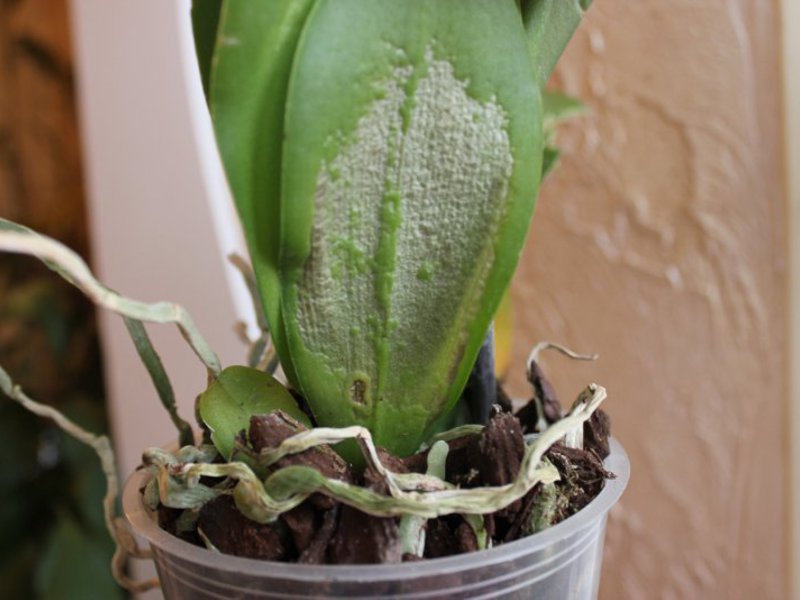
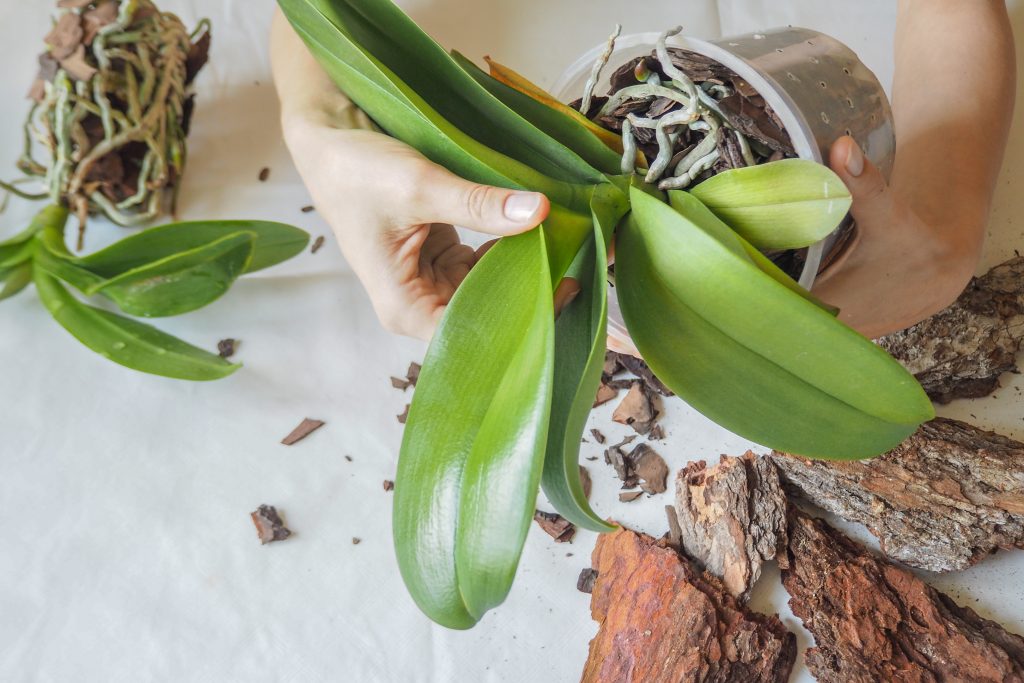

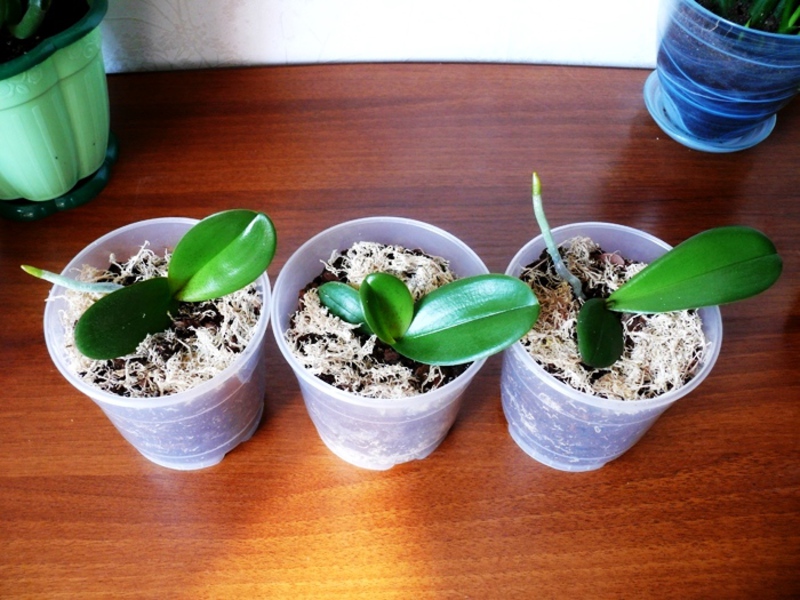
1 comment